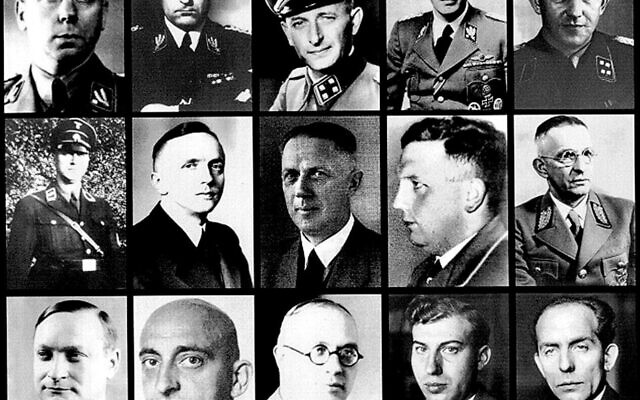The infamous Wannsee conference 80 years on
There are events in modern Jewish history which must never be forgotten.
To all who have worked in or with government – probably anywhere in the western world – the scenario is commonplace. Interdepartmental meetings lasting hours or days are held regarding policy issues – often at the highest levels. Attendees hear an outline of issues and governmental intentions, contribute to discussion, and minutes, verbatim or edited, are taken for the record and subsequent distribution. With the meeting over participants may continue with informal discussions, perhaps over drinks, and the day comes to an end.
But never in history has there been such an interdepartmental committee meeting – now termed a “conference” – as that of January 20, 1942. At the Wannsee villa used for high level Nazi German government meetings, there took place an event where banality, euphemism and process placed a stamp of “legality” on the ultimate horror.
Originally scheduled to take place some weeks earlier, it had been delayed by developments in the war, especially Pearl Harbour as well as a turnaround on the Russian front. By the time conference planning was underway – let alone when it actually took place – hundreds of thousands of Polish, Serbian and Russian Jews had already been killed. The process of disseminating information among government circles about the fate of the Jews was already well underway, So the reality of the conference cannot have come as a surprise to the invited attendees.
And those attendees were no lowly public servants. They included high level representatives from several government ministries, including state secretaries from the Foreign Office, the Justice, Interior and State Ministries, and representatives from the SS. Of the 15 officials who attended the conference, many serving as departmental heads, eight held academic doctorates. Yet the only point of hesitation came from one Erich Neumann (not one of the most widely known members of the Nazi hierarchy) who represented the ministries of Economy, Labour, Finances, Food, Transport and Armaments and Ammunition, regarding the need for exemption of Jews who were working in industries vital to the war effort and for whom no replacements were available.
The principles of mass murder and extermination were not debated. And I would add, those of us revisiting history who might have thought that “conference” implied discussions over a period of days may be surprised to know that regarding this matter of such significance after just 90 minutes all was over and basically the Final Solution had the imprimatur of all areas of the Nazi government.
Director of the Reich Security Reinhard Heydrich, who chaired the conference had effectively ensured the cooperation of administrative leaders of the various government departments in its implementation. With the business of the hour successfully completed, cognac was served!
In retrospect however the obvious question facing us as we reflect on this anniversary is: How could it happen? In an article written for The AJN 10 years ago to mark the 70th anniversary of Wannsee, my former classmate, the locally well-known late Professor Harry Reicher (who served at Monash University prior to moving to the United States where inter alia he taught Holocaust history at the University of Pennsylvania while also assisting Agudat Israel of America representing Jewish causes to the United Nations) explained how it could come about:
First, from the time the Nazis ascended to power, in March 1933, they directed a massive propaganda campaign at the population. This proceeded on the assumption that Jews (in particular, among others) were racially inferior beings: that they were effectively vermin, being polluters of Aryan blood, who had to be extirpated from society.
Very important to the propaganda campaign was the regulatory assault by the Nazis, aimed at the Jews, consisting of a torrent of some 2000 “laws” directed specifically and directly against them. These emanated from, and reflected, the underlying racial ideology, and, at the same time, reinforced it, by systematically whittling away at the indicia of humanity, in so far as the Jews were concerned.
Thus, Jews were subjected to the humiliation of being separately defined, thereby stamping them as different and inferior.
Their capacity to work, earn a livelihood and support themselves and their families, was withdrawn, as one profession, business and trade after another was closed to them; their property was expropriated by a fiendish schema of laws which, on the one hand, provided the government with a massive inventory of all Jewish-owned property, that they then ruthlessly proceeded to seize.
Over a period of time, they were excluded from avenues of education, at both university level as well as below, resulting in what the diarist Victor Klemperer described as an “intellectual death sentence”.
Gradual segregation, as well as severe restrictions on movement, both within as well as among cities and towns, compounded the sense of inferiority, and degenerated into a communal and individual claustrophobia of depressing proportions. And, on top of everything else, they were publicly branded as being objects of obloquy, and subject to all the other restrictions, indignities and humiliations, most infamously by laws requiring the wearing of the Star of David on their outer clothing.
And so Reicher concluded his historical survey with the following words: “Through the legislative scheme implementing these and other steps in the persecution of the Jews, the Nazis discriminated against, ostracised and, most importantly, dehumanised them.
“In doing so, they very effectively paved the way for the ultimate corollary thereof, as represented by the Wannsee Conference.”
As we mark this anniversary followed in a week’s time by January 27 – the anniversary of the liberation of the pathetic few survivors of Auschwitz-Birkenau – the date designated by the United Nations as International Holocaust Remembrance Day, our key theme must be that which the Torah instructed us regarding Amalek (Devarim 25:17-19): “Zachor” – remember and “Lo tishkach” – do not forget.
Shabbat shalom,
Yossi
Yossi Aron OAM is The AJN’s religious affairs editor.


comments